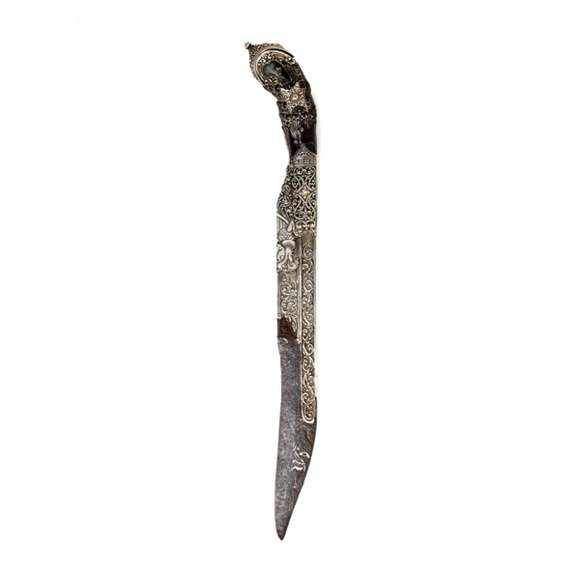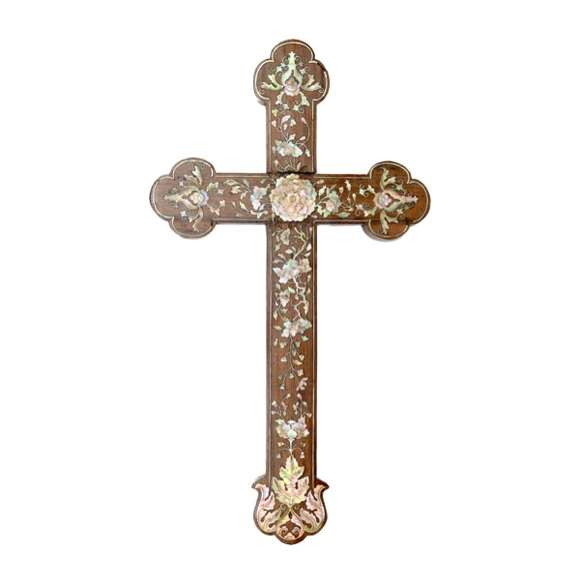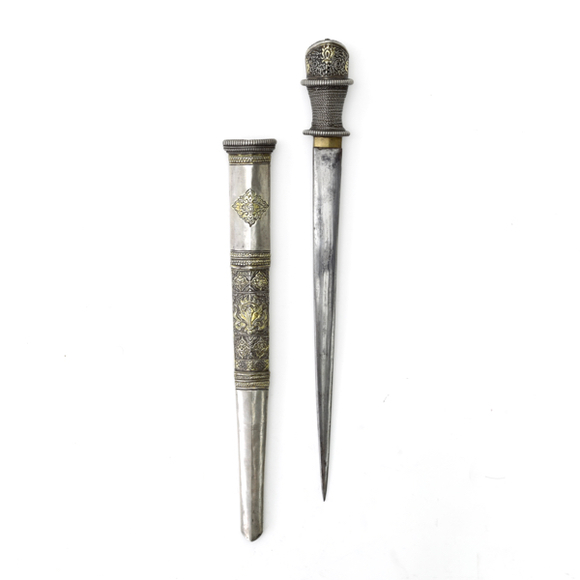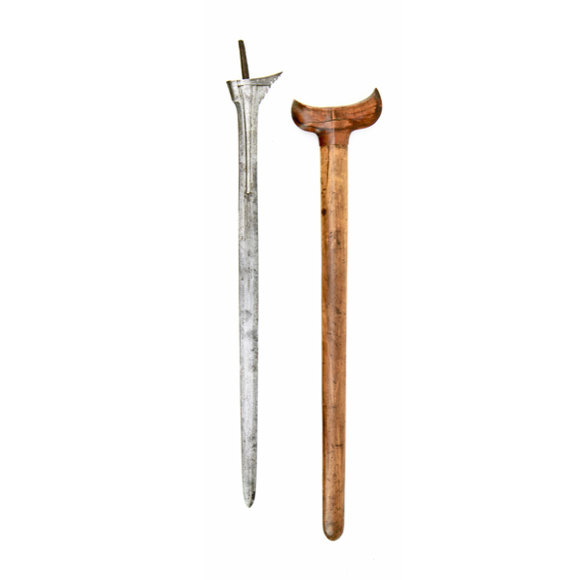Language: Sanskrit
Origin: Classical literature
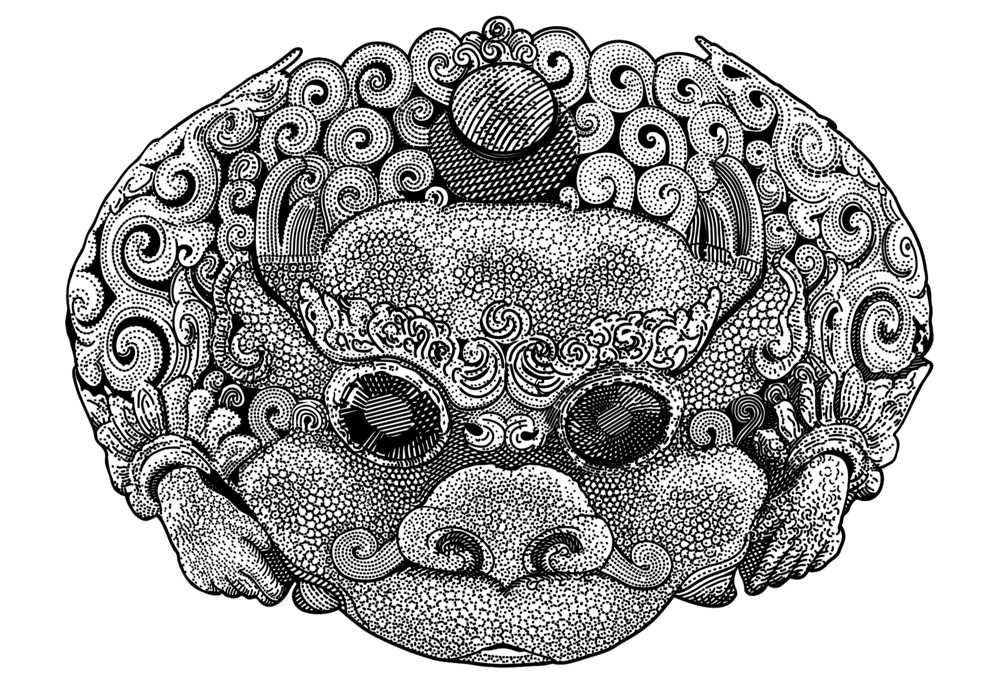
Kīrtimukha, Mandarin Mansion's logo.
Line drawing based on the iron guard of a 15th century Chinese sword in the Royal Armories in Leeds.
Description
Kīrtimukha (कीर्तिमुख) literally means "face of glory", it is an all-devouring monster that is used across Asia as an auspicious decorative element that is supposed to consume evil.
The origins of the design are murky and go back at least 2 millennia. One myth of origin comes from the Hindu Skanda Purana of India of the 8th century B.C. It was described as spawning from Shiva's third eye in a burst of rage. It was meant to devour the terrible beat Rahu, but upon seeing Kīrtimukha, Rahu surrendered and was offered protection by Shiva.
This left Kīrtimukha's without something to devour and Shiva suggested it should devour itself, which it did until only its face and upper jaw remained. Shiva then ordered it to be used as an ornament above temple doors and exclaimed that no-one would obtain Shiva's grace without worshipping Kīrtimukha. It since became an auspicious ornament with evil devouring properties.
In China, a remarkably similar motif appears even earlier on bronze vessels of the Shang dynasty of the 16th to 10th century B.C. Its first written description is in the Zuo Zhuan of the 4th century B.C. where it was called tāotiè (饕餮), literally meaning "gluttonous". In China, too, it customarily appears without its lower jaw which is one of its main distinguishing features.
Joseph Campbell described it as the "epitomization of the self-consuming mystery that is life".
Also see: Tāotiè (饕餮)
Examples
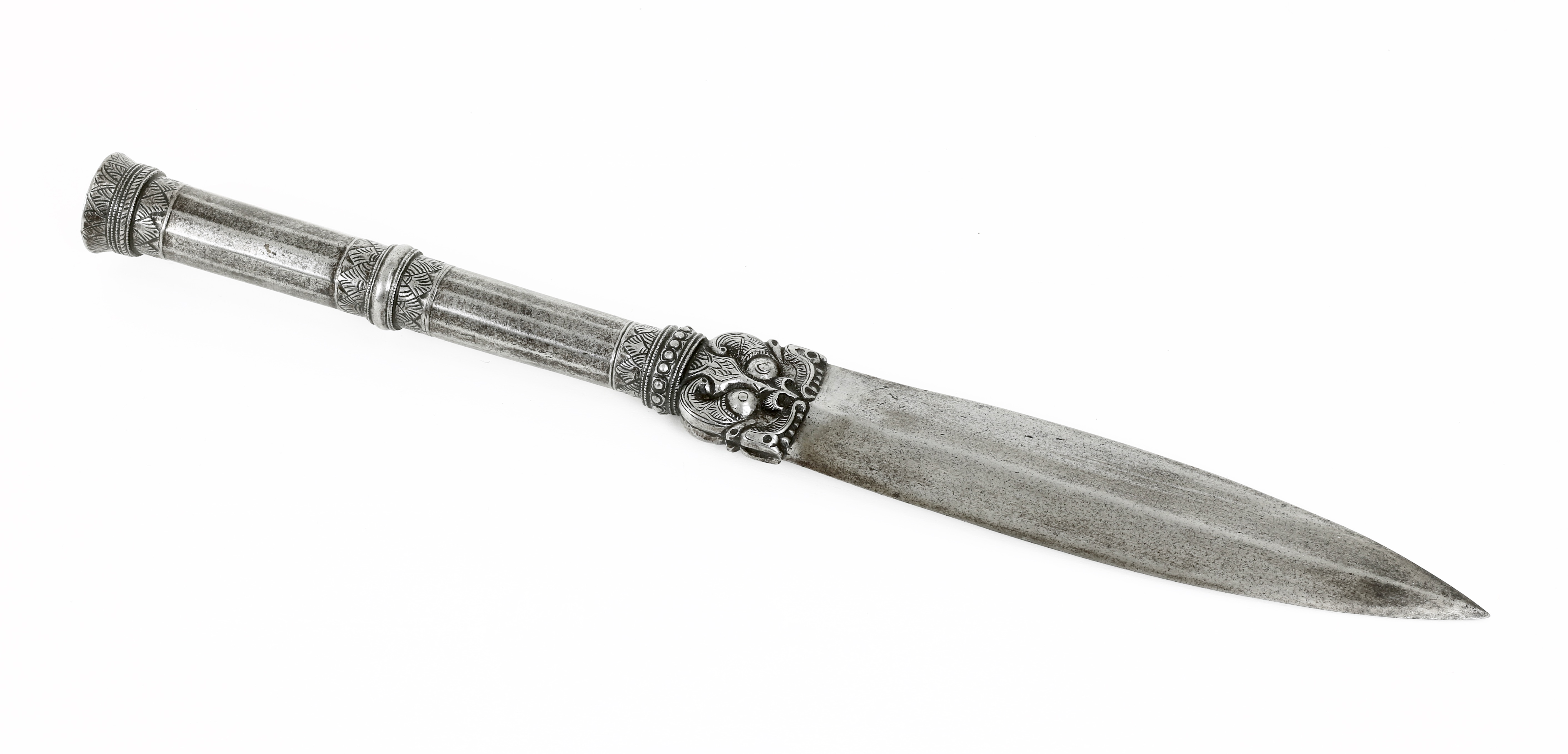 Kirtimukha on a Tanjore spearhead. South India, 17th century.
Kirtimukha on a Tanjore spearhead. South India, 17th century.
 Kirtimukha or tāotiè on a Japanese tachi tsuba
Kirtimukha or tāotiè on a Japanese tachi tsuba
 Kirtimukha on the guard of a Vietnamese saber. 18th century.
Kirtimukha on the guard of a Vietnamese saber. 18th century.
This is a rarer example with a lower jaw. Vietnamese design often breaks convention.
 Tāotiè shaped guard on a Chinese shortsword. 19th century.
Tāotiè shaped guard on a Chinese shortsword. 19th century.
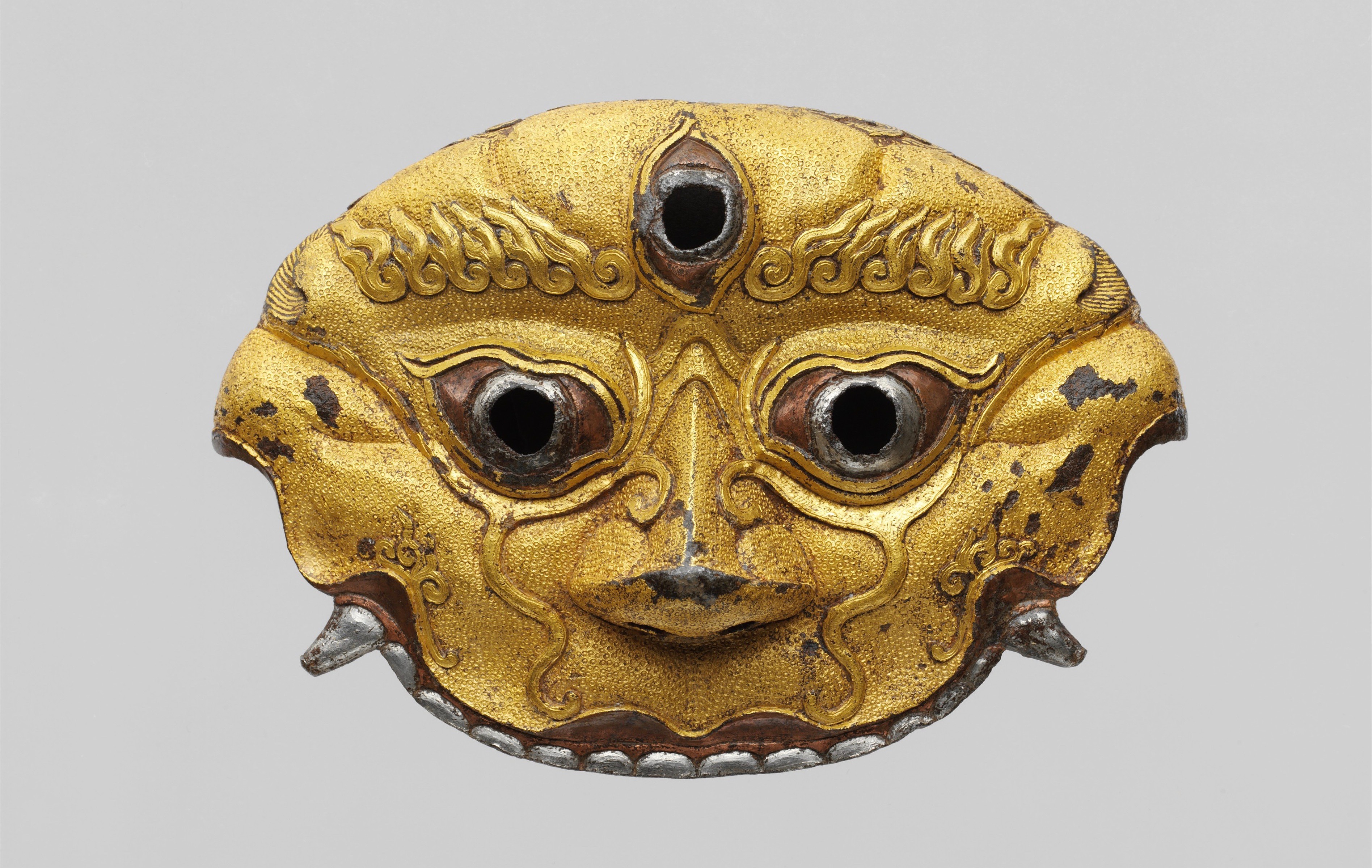 Tāotiè shaped sword guard. Tibet 14th-15th century.
Tāotiè shaped sword guard. Tibet 14th-15th century.
Metropolitan Museum accession number 2014.533.
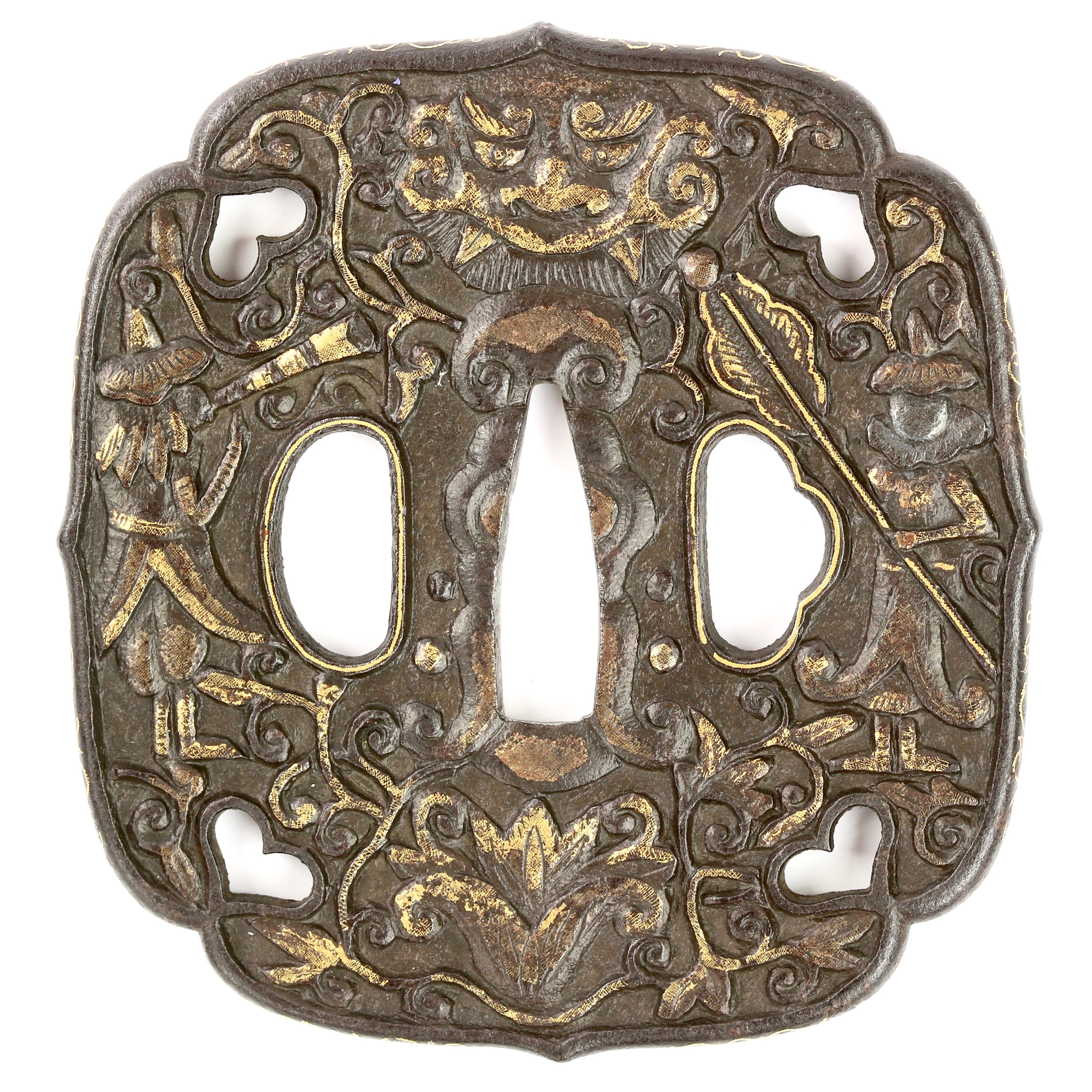 Kirtimukha on an Asian Export sword guard. 18th century.
Kirtimukha on an Asian Export sword guard. 18th century.
Further reading
Joseph Campbell; "The Mythical Image", MJF Books, New York, 1974. Pages 118 - 130

